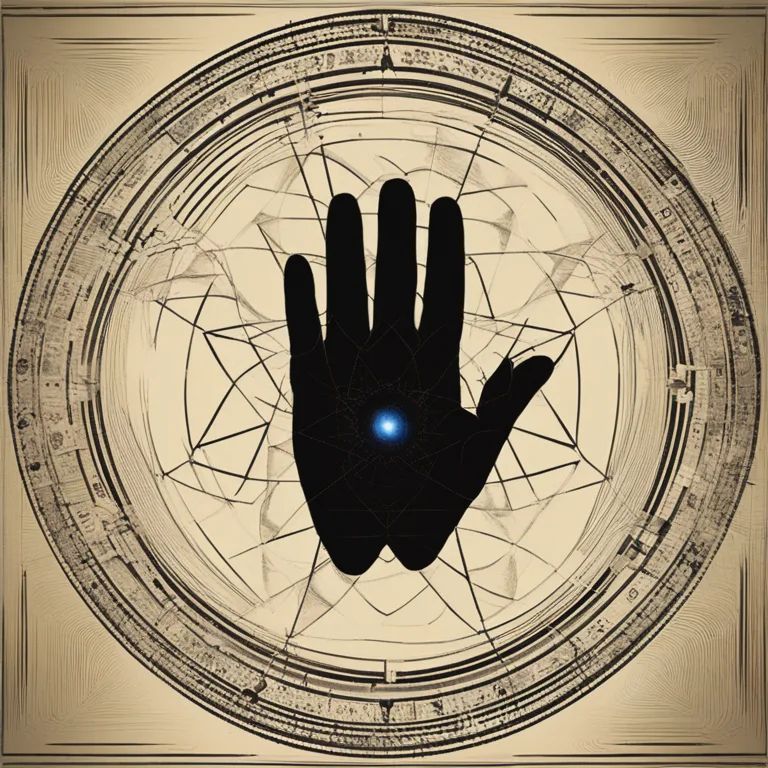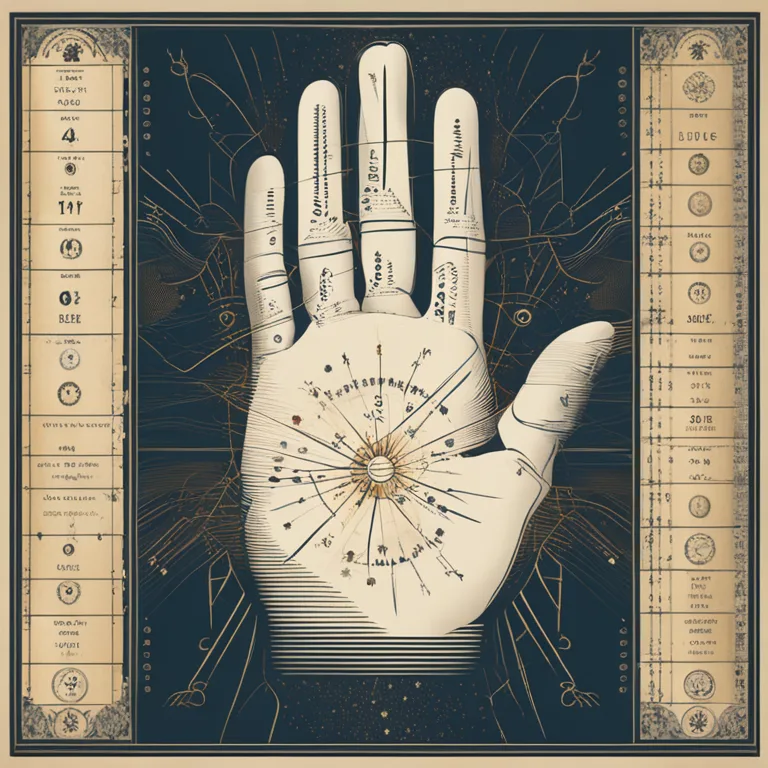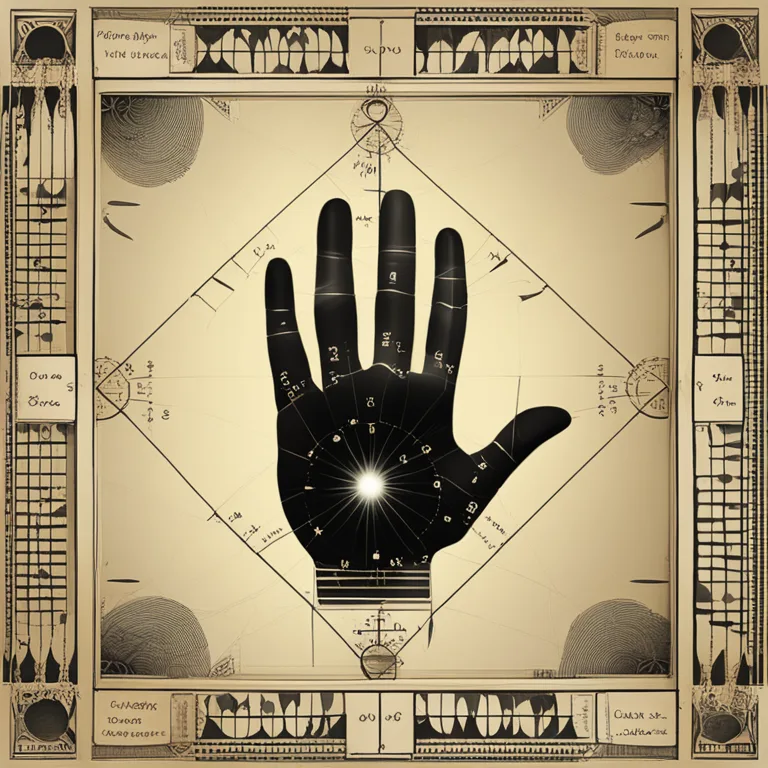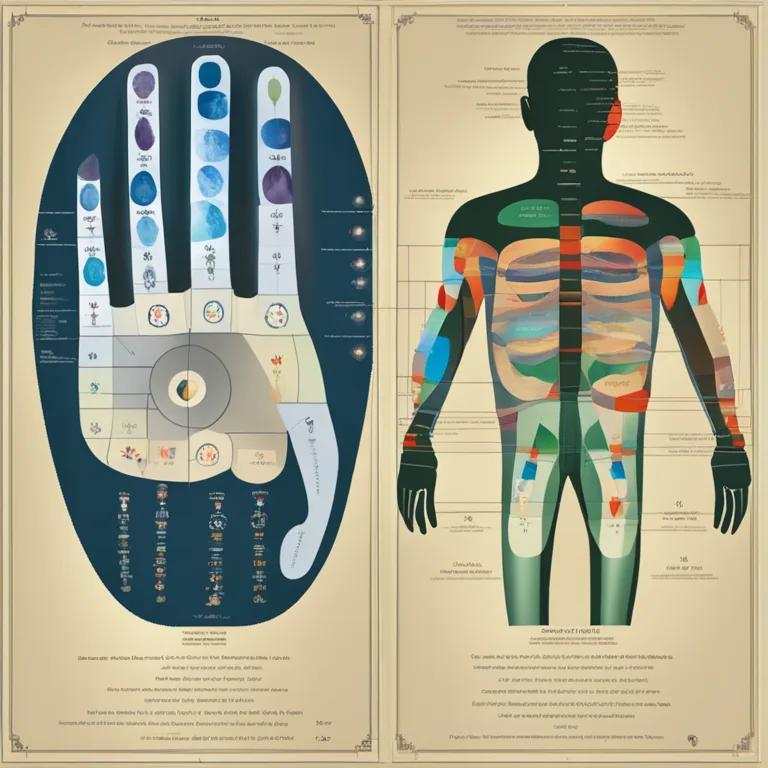
The Palm's Tale: Insights into Health via Palmistry
Delve into the intriguing connections between palmistry and personal health. This article reveals how the ancient practice can offer clues about one's wellbeing.
article by Nora Pennington
Palmistry: A Brief Overview
Palmistry, also known as chiromancy, is the ancient art of analyzing the physical features of the hands to interpret personality traits and predict future events. While it has been practiced for millennia, with roots traceable to various cultures such as Indian, Chinese, and Egyptian societies, modern palmistry combines traditional techniques with psychological insights. As we embrace holistic wellness, palmistry's role in health assessment gains new attention, inviting a blend of intuition and science.

Health Revelations Through Hand Lines
The lines on your palms, particularly the heart, head, life, and fate lines, are said to convey significant health indications. For instance, a chain-like heart line might reflect cardiovascular challenges, while breaks or changes in the life line could signify physical transformations or health scares. It's crucial, however, to approach such readings with a nuanced understanding, as palmistry is not a diagnostic tool but rather a symbolic language offering potential insights.

Mounts and Health Markers
Palmistry extends beyond lines; palm mounts, the fleshy pads beneath each finger and the thumb, are believed to be linked to different aspects of human physiology and temperament. For example, the Mount of Venus, found at the base of the thumb, is associated with vitality and love. An overpronounced mount may indicate an overactive system, whereas a flat area might suggest a lack of energy or enthusiasm for life, mirroring your physical state.

Finger Analysis for Physical Clues
Fingers in palmistry are not merely for adornment with rings; they serve as avenues to our body's health. Each finger correlates with specific body parts and systems. A strong, well-defined index finger, associated with the respiratory system, could show robust lung health, while a weak or crooked finger might indicate vulnerability in this area. Observing such characteristics can lead to further exploration and encourage proactive health measures.

Fingernail Signs and Health
Fingernails are not to be overlooked in palmistry. Their shape, texture, and color provide subtle cues about an individual’s well-being. For instance, nails that are spoon-shaped may suggest iron deficiency anemia, and excessively brittle nails might reveal a broader nutritive imbalance. While a palmist can flag these features, it's essential to follow up with a healthcare professional for accurate diagnosis and treatment.
The Merits of Caution and Context
While palmistry presents intriguing possibilities for health insight, it's important to maintain a healthy skepticism and seek the expertise of medical professionals for health-related concerns. Palmistry should never replace medical advice; instead, it can serve as an additional layer to one's awareness of their health, encouraging mindful living and well-rounded care.
Published: 1/3/2024
Modified: 1/3/2024
More predictions
Come back here soon to learn more about yourself and your future


Palmistry Clues to Predicting Parenthood
Delve into the palmistry lines associated with predicting childbirth and learn what your hands may reveal about future family life.


Palmistry's Insight into Your Health
Discover the connections between the lines on your palm and your well-being in this comprehensive look at palmistry’s role in health forecasting.


The Origins & Journey of Palmistry
Trace the fascinating history of palmistry, understanding its ancient roots and its evolution through cultures and time.